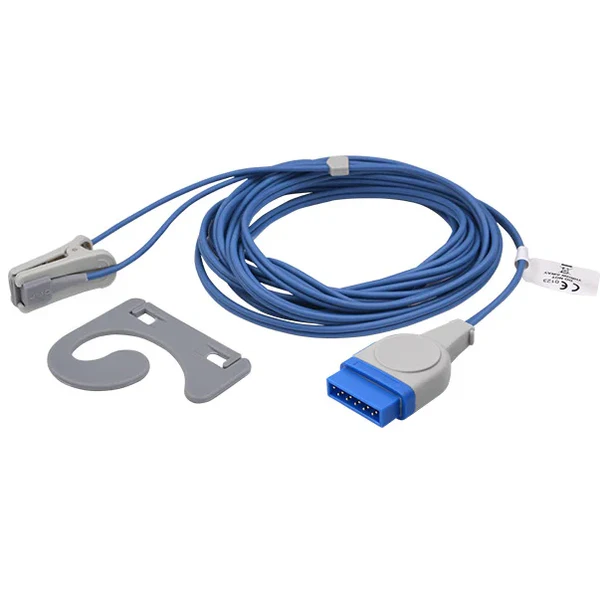How to Choose the Right SpO₂ Sensor: A Simple Guide for Everyone
🔑 Quick Answers (What You Need to Know)
- Best for hospitals: Disposable sensors (cut infection risks).
- Best for home use: Reusable sensors (save money long-term).
- Most important rule: Always check FDA compliance.
- Biggest mistake: Using adult sensors on babies.
What is an SpO₂ Sensor and How Does It Work?
An SpO₂ sensor works like a tiny flashlight and camera for your blood. It clips onto your finger, shines light through your skin, and measures oxygen levels in your blood. Doctors use this to check if your heart and lungs are working right!
“Good sensors are like good helpers – they give accurate info when it matters most.” – Nurse Jane, ICU Specialist
Disposable vs. Reusable Sensors: Which Should You Pick?


Left: Mindray disposable sensor | Right: Mindray reusable sensor
Disposable Sensors (Short-Term Use)
- Good for: Hospitals, surgeries, or sick patients (stops germs)
- Top pick: Mindray disposable sensors work with most hospital machines
Reusable Sensors (Long-Term Use)
- Good for: Home care, asthma patients, or older adults
- Top pick: Mindray reusable sensors last 2+ years
Which Sensor Fits Whom? A Quick Guide
| Sensor Type | Who It’s For | Key Features |
| Neonatal | Newborn babies | Super soft, tiny size |
| Pediatric | Kids (1–12 yrs) | Stretchy, fits small fingers |
| Adult | Teens & adults | Strong, stays in place |
5 Must-Check Features Before Buying
1. Will It Work With Your Equipment?
Match brands like Mindray, Philips, or Masimo. Wrong matches can give fake readings! (FDA compatibility guide)
2. Does Skin Tone Affect Accuracy?
Yes! FDA says sensors must work on all skin colors. Look for “tested on dark skin” labels. Learn more: NIH skin tone study
3. Is It Safe for Babies?
Never use adult sensors on infants – they’re too big. Always choose neonatal-specific sensors.
4. How Long Does It Last?
- Disposable: 1–2 days
- Reusable: 1–2 years (if cleaned right)
5. Is It FDA Approved?
Check for “FDA 510(k) cleared” – this means it passed strict tests! Verify approvals here.
SpO₂ Sensor Trends: What’s New in 2024?
Market Growth Snapshot
- 2023 Sales: $865 million
- 2030 Prediction: $1.3 billion
- Hot Product: Disposable sensors (58% of sales)
Real Hospital Results: Disposable vs. Reusable
- 10 U.S. Hospitals Tested:
- Disposable sensors = 12% fewer infections
- Reusable sensors = 35% cheaper over 5 years
Source: Journal of Clinical Monitoring
FAQs: Your Top Questions Answered
Q: Can nail polish mess up readings?
A: Yes! Bright colors like blue or black can trick the sensor.
Q: Do sensors work on cold fingers?
A: Not well. Warm your hands first for accurate results.
Q: Are wrist sensors as good as fingertip?
A> For hospitals, fingertip is better. Wrist is okay for gym use.
Conclusion: Get Your Perfect Sensor Today!
Now that you know how to choose, get FDA-approved sensors that fit your needs:
Top Picks from Med-Linket Corp:


